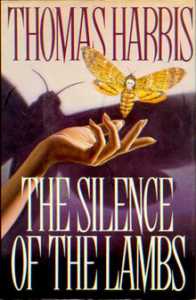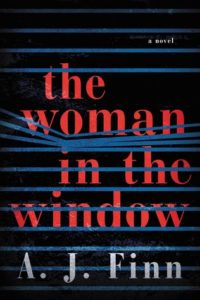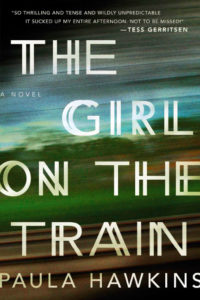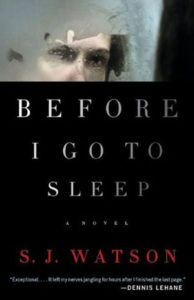Psychologists and psychiatrists can play a number of intriguing roles in a thriller. When dealing in a world where secrets are the lynchpin to plot and murder is only the beginning of the tale, they can help move the story in the direction the writer needs it to go, while at the same time giving the reader an authentic view into the mind of a madman. Whether the psychologist/psychiatrist a main character seeking to actively uncover a truth, part of the secondary cast who can provide backstory, theories, or diagnosis, or merely a person who floats in and out of scenes throughout the book, adding bits of information that help tie threads together in the plot, the psychologist/psychiatrist character can be a fascinating one. Are they trustworthy? Are they helping our protagonist or protecting the antagonist? Whose best interests do they have in mind? Who exactly are these people we trust with our innermost secrets and thoughts?
In my latest thriller, I Know Everything, my main character is a psychiatrist and I use him in a multi-faceted way to move the story, confuse the reader, set up doubt, and trigger different emotions in both the reader and the police investigator trying to track down his wife’s killer. Should we be pulling for the doctor? Should we be rooting for his capture? Is he trustworthy or is everything he says a lie? Blurring the line between antagonist and protagonist can be done with any character in a thriller, but the gravitas that a professional phycologist/psychiatrist brings to the story adds another level of intrigue. This person is trained to recognize the weaknesses of the mind and can manipulate accordingly. They know the secrets of the psyche that the general populous don’t, therefore, they can use this knowledge as a weapon. That, alone, adds an entirely different level of suspense, which is what makes the psychologist/psychiatrist character so riveting.
Let’s take a look at six of my favorite psychologist/psychiatrists and see how they’re used in these incredibly suspenseful thrillers (warning—there may be spoilers ahead if you haven’t read the books…):

Dr. John Cawley
Shutter Island, by Dennis Lehane
When we first meet Dr. Crawley, we see him as a man who is perplexed that his patient could have escaped a locked cell and gotten out of the gated and guarded grounds that is the psychiatric facility on Shutter Island. He seems desperate to find his patient and genuinely worried. As a reader, we’re drawn to the doctor’s side as he accepts the help of two US Marshals, Teddy Daniels and Chuck Aule. But as the story unfolds, Dr. Crawley becomes more guarded about how things are run on Shutter Island and his demeanor changes from desperate man seeking to find his lost patient to a darker figure with secrets to keep at all costs. The author confuses the reader, making them bounce back and forth between liking the doctor and not trusting him. Only when we discover his real role at the end of the story do we come to see him as a good man trying his hardest to help Teddy break free of his psychosis. In the end we would consider him one of the good guys, but still, his methods of treatment leave the reader with mixed emotions.

Dr. Hannibal Lecter
The Silence of the Lambs, by Thomas Harris
There not much to say about this character that we don’t already know. He’s become a fabric of our culture, so beautifully written and so menacingly evil. But as a psychiatrist in the story, he helps move the plot by connecting dots for Clarice Starling as she investigates the identity of the Buffalo Bill serial killer. He treats his sessions with Clarice as if it was a doctor/patient session, delving into her mind and manipulating her memories to gain a trust and a bond that goes beyond agent/prisoner. As readers, we know he’s evil, but at the same time, he’s so damn charming we forget we’re supposed to hate him. Lecter is used to provide backstory for the reader and connect dots for Clarice during her investigation, and he’s used brilliantly. It’s hard for a reader to root for a cannibal, but we find ourselves doing just that. Thomas Harris pulled it off masterfully.

Dr. Anna Fox
The Woman in the Window, by A.J. Finn
In this book, the author uses the main character as the psychologist and it’s very effective. Anna Fox is a child psychologist, and at the same time, is suffering from terrible case of agoraphobia brought on by severe trauma. She’s self-aware enough to know how she should be treating herself, and when other characters are introduced, she knows how she could be evaluating them. But her mind is so confused from her affliction that she second-guesses herself every step of the way. Here, the reader wants to trust her expertise, but isn’t sure if she’s thinking clearly enough to do so. We want to root for her, but at the same time, don’t know if we can trust her. Drawing out the reader’s frustration and empathy is what makes this character so effective. She’s an expert at delving into the minds of others, but because her own mind is so traumatized, she can’t trust what she thinks she’s seeing, and therefore, we can’t trust her either even though we want to.

Dr. Kamal Abdic
The Girl on the Train, by Paula Hawkins
Dr. Abdic is a great example of a character who defies the reader’s initial opinion of him. The patient/doctor relationship —especially in the world of psychology—is a sacred thing, and when Rachel sees he and Megan kissing, we feel just as betrayed and angry as Rachel does. This character also sets the plot into motion as this one act that Rachel sees (that she thinks is an affair) causes her to investigate and the story unfolds from there. It’s only later do we realize the kiss between Megan and Dr. Abdic was innocent and taken out of context. This character was brilliantly built to push the plot forward, add a layer of suspicion, and cause a very effective misdirection.

Dr. Nash
Before I Go to Sleep, by S.J. Watson
Dr. Nash is a prime example of using the psychologist to put pieces of the puzzle together for the reader (and in this case, the main character herself). Christine is suffering from a kind of amnesia that causes her to forget everything about her past the moment she wakes up to a new day. Dr. Nash works with her each day, helping her to try and remember what’s happened in the days prior and leaves clues for her to follow the next day. As readers, we tend to trust him right away, and he’s mostly used to fill in the gaps of Christine’s past, but since she can’t truly remember anything, we never quite know what’s the truth and what’s a lie. We never know if we can really trust the man who claims he’s trying to help her.

Dr. Carmen Hinojos
The Last Coyote, by Michael Connelly
The Last Coyote is a Michael Connelly book from the Bosch series. Dr. Hinojos is first introduced here, but she has appeared in other books as well. In this book she’s used to help Bosch come to terms with what happened to his mother, which pushes the plot toward Bosch wanting to find out more about his mother’s homicide that was never solved. But for the reader, she helps provide another layer of character to Bosch that helps us connect with him. Her character is a plot device that pushes the story, but at the same time, she helps the reader by providing backstory and depth to a man who seems so hard on the surface. She humanizes Bosch to great effect. She’s a bit player for the most part, but quite important in her role.
* * *
So, those are my six examples of psychologists and psychiatrists who can help push plot, add depth, uncover secrets, provide backstory, and connect dots for both the main character and the reader. I think the authors of these books did a magnificent job of executing what they set out to accomplish with these special characters. The psychologist/psychiatrist role in thrillers will continue to fascinate me as I watch authors use them in so many different ways. As I said before, any character can be used to move plot or connect the dots or provide misdirection, but when the person involved in doing so is trained to manipulate the mind, it adds a level of suspense that other character types simply can’t provide.

















